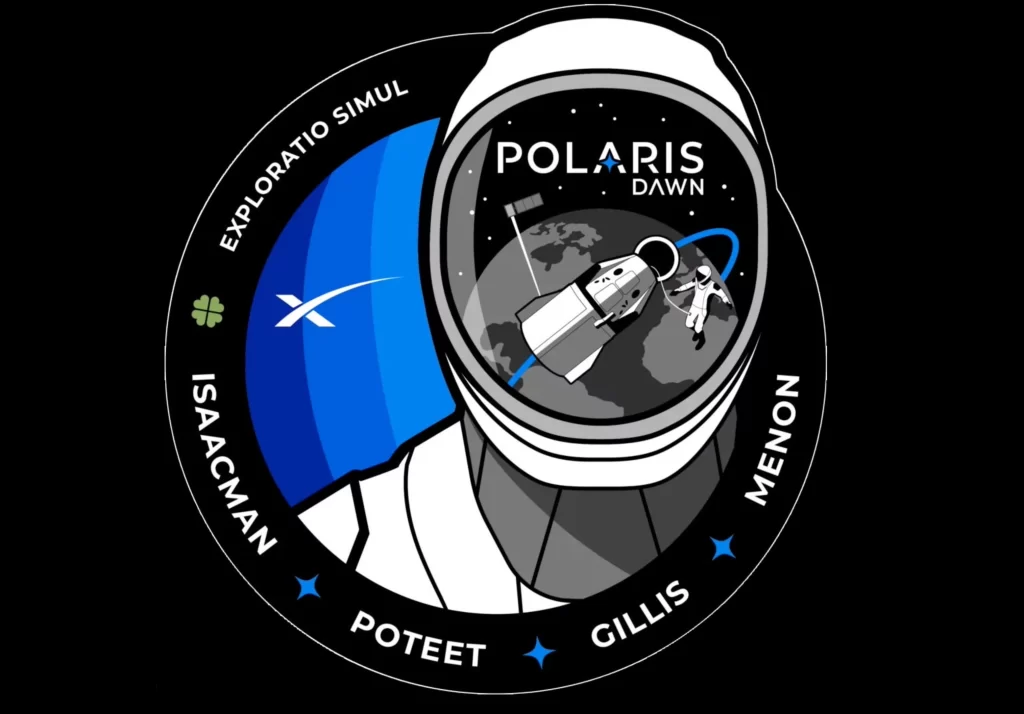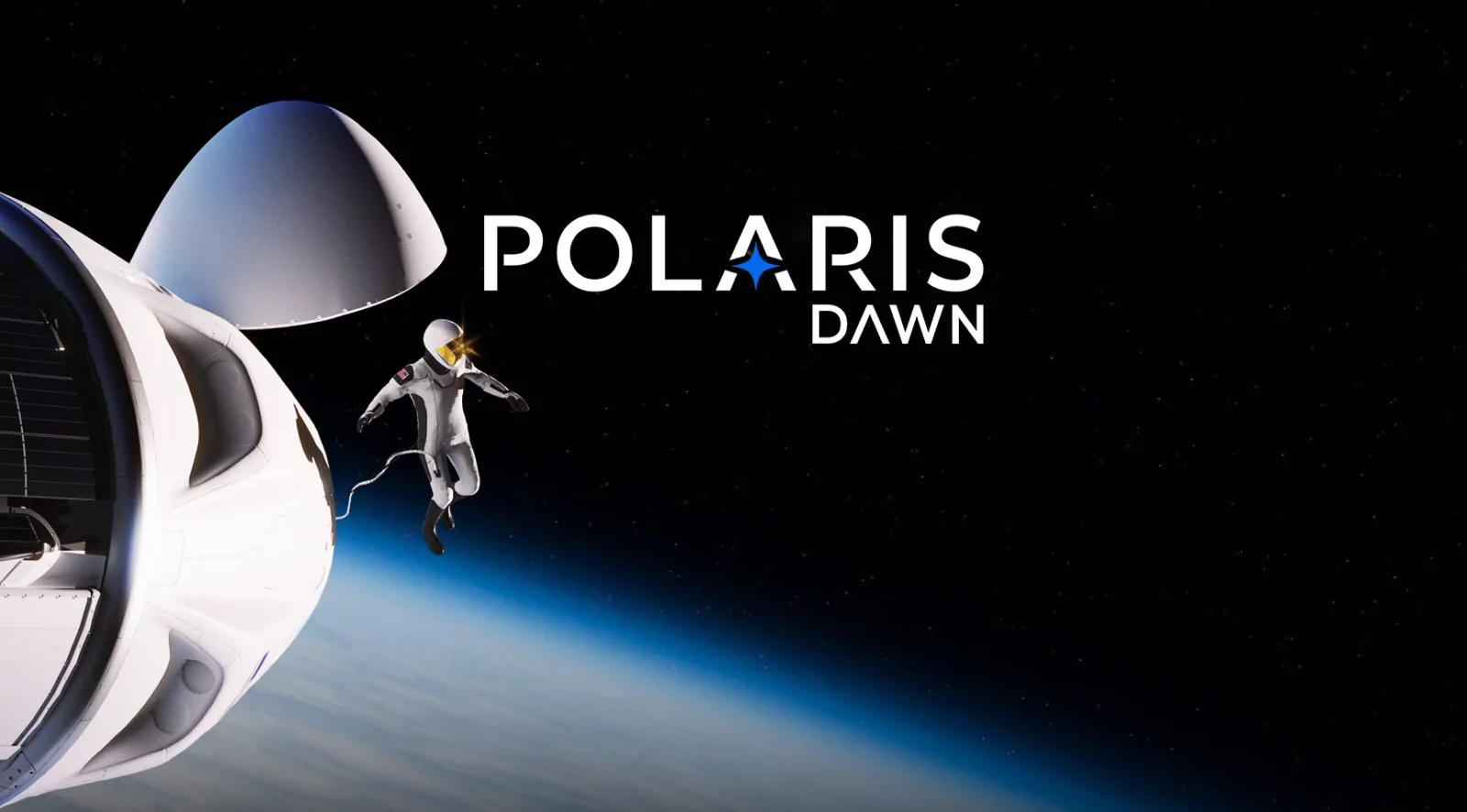The Polaris Dawn Mission is an ambitious private spaceflight endeavor spearheaded by SpaceX and backed by billionaire Jared Isaacman, who previously commanded the Inspiration4 mission. Set to achieve several historic milestones, including the first-ever commercial spacewalk, this mission is designed to push the boundaries of human space exploration further than ever before. This article delves into the mission’s objectives, vision, and innovative technologies, highlighting the key players and the future implications of such a groundbreaking endeavor.
Overview of the Polaris Dawn Mission
The Polaris Dawn Mission represents the first of a planned three-mission program under the Polaris Program, initiated by Jared Isaacman in collaboration with SpaceX. Scheduled for launch on 12 September 2024, this mission will use SpaceX’s Dragon spacecraft to transport a four-member crew to orbit. What makes Polaris Dawn unique is its aim to achieve the highest Earth orbit ever flown by a crewed mission, surpassing even the altitudes reached by the Apollo program.
A critical component of the Polaris Dawn Mission is the plan to conduct the first commercial extravehicular activity (EVA), or spacewalk, which will mark a significant milestone in space exploration history. The mission will also test Starlink’s laser-based communications in space, assess human exposure to space radiation, and conduct research aimed at improving future space missions.

The Vision Behind Polaris Dawn
The vision of Polaris Dawn is to expand human presence in space through innovation, research, and private enterprise. At its core, the mission embodies a commitment to advancing space exploration beyond government-funded projects, bringing the private sector into the fold to explore new frontiers.
The Polaris Program, with Polaris Dawn as its initial mission, envisions creating a path for sustainable and repeatable space missions. It aims to open opportunities for scientific research, technological advancement, and human spaceflight beyond Earth’s orbit. The program focuses on bridging the gap between current low-Earth orbit operations and future deep-space missions, setting the stage for future explorations to the Moon, Mars, and beyond.

The Crew and Their Roles
The Polaris Dawn crew consists of four experienced professionals who bring a diverse set of skills and expertise to the mission. Leading the team is Jared Isaacman, an accomplished pilot and commander of the Inspiration4 mission, which was the first all-civilian spaceflight. Isaacman’s experience and passion for space exploration serve as the driving force behind the Polaris Program.
Anna Menon, a lead Space Operations Engineer at SpaceX, is another prominent crew member. She will serve as the mission’s Medical Officer, overseeing the health and safety of the crew during the mission and the historic Polaris Dawn spacewalk. Her background in biomedical engineering and her extensive experience in managing space operations make her an ideal candidate for this role.
Sarah Gillis, another SpaceX engineer, and Scott Poteet, a retired U.S. Air Force pilot, round out the crew. Together, these four individuals will work closely to accomplish the mission’s objectives, including conducting research, testing new technologies, and undertaking the first commercial spacewalk.

The Historic Polaris Dawn Spacewalk
The centerpiece of the Polaris Dawn Mission is undoubtedly the private spacewalk, a monumental step forward in commercial space operations. This spacewalk will be conducted in a specially designed spacesuit developed by SpaceX to protect astronauts from the harsh conditions of space. It will test the suit’s capabilities in a real-world environment, providing valuable data for future missions.
The primary objective of the Polaris Dawn spacewalk is to demonstrate the safety and reliability of new spacesuit technologies, paving the way for future private and commercial extravehicular activities. This mission will not only test human capabilities in the vacuum of space but also evaluate how private entities like SpaceX can support complex operations traditionally reserved for governmental agencies like NASA.
Technological Innovations and Objectives
The Polaris Dawn Mission will showcase several cutting-edge technologies and methodologies that could revolutionize future space missions. One of the key technologies being tested is the Starlink laser communications system. This technology aims to improve space-based communication networks, enabling faster data transfer rates and more reliable connections between Earth and spacecraft in orbit.
In addition to the communications technology, the mission will focus on studying the effects of space radiation on human biology, collecting valuable data that could inform the design of future space missions, particularly those venturing beyond low-Earth orbit. The Polaris Dawn team will also test various health monitoring tools to better understand how the human body adapts to space conditions.
Importance of Private Space Missions Like Polaris Dawn
The Polaris Dawn Mission represents a new era of space exploration led by private entities. It demonstrates how private funding, innovation, and risk-taking can complement governmental efforts to explore the cosmos. Missions like Polaris Dawn offer the potential to accelerate the pace of space exploration, enabling more frequent and sustainable missions.
By pushing the boundaries of what is possible in space, the Polaris Dawn Mission aims to foster new scientific discoveries and technological innovations. It also represents an essential step towards creating a sustainable and profitable space economy, which could lead to more affordable access to space for individuals, researchers, and commercial enterprises.
Future Implications of the Polaris Dawn Mission
The success of the Polaris Dawn Mission could have far-reaching implications for the future of space exploration. Proving that private companies can undertake complex space operations, will likely encourage more investment and interest in the space industry from both private investors and government agencies. This could result in a broader range of missions and more opportunities for scientific research and international collaboration.
Furthermore, the mission’s success will contribute to the development of technologies and infrastructure needed for future deep-space exploration, including missions to the Moon, Mars, and beyond. It will also help refine the procedures and equipment necessary for long-duration human spaceflight, bringing us closer to becoming a multi-planetary species.
The Role of SpaceX in Polaris Dawn’s Success
SpaceX, under the leadership of Elon Musk, has played a crucial role in bringing the Polaris Dawn Mission to fruition. The company’s experience with spacecraft development, launch operations, and human spaceflight missions has been instrumental in designing a mission that is both ambitious and achievable. The Polaris Dawn mission will utilize SpaceX’s Dragon spacecraft, a proven platform for crewed space missions, which will be launched atop a Falcon 9 rocket from the Kennedy Space Center.
SpaceX’s innovative approach to space technology, including its development of the Starlink communications system and new spacesuit designs, is critical to the mission’s objectives. The success of Polaris Dawn will not only enhance SpaceX’s reputation as a leader in the space industry but also serve as a proof of concept for future private and commercial space missions.
A New Dawn for Space Exploration
The Polaris Dawn Mission represents a bold step forward in the realm of private space exploration. With its ambitious objectives, innovative technologies, and a vision to expand human presence in space, it serves as a beacon for the future of space exploration. As the world watches this historic mission unfold, it becomes clear that the future of space exploration will not only be shaped by governmental agencies but also by private companies willing to push the boundaries of what is possible.
By achieving new milestones like the highest Earth orbit, the first private spacewalk, and groundbreaking scientific research, Polaris Dawn is setting a precedent for future missions. The mission’s success will likely inspire other private ventures to take on greater challenges, ultimately accelerating humanity’s quest to explore the final frontier.
As the launch date for Polaris Dawn approaches, the world eagerly anticipates what this mission will achieve and how it will shape the future of human space exploration.





